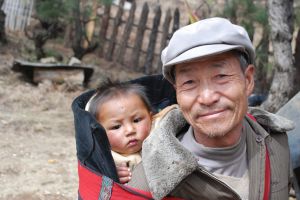None and Done: The Labor Market for Young Basketball Talent
by Brandon Fuller The 2008 Celtics-Lakers NBA finals featured two great straight-from-high-school athletes: Kobe Bryant and Kevin Garnett. The NBA benefits from a host of other players drafted straight from high school, such as LeBron James, Dwight Howard, Tracy McGrady, Amare Stoudemire, and Tyson Chandler.
The 2008 Celtics-Lakers NBA finals featured two great straight-from-high-school athletes: Kobe Bryant and Kevin Garnett. The NBA benefits from a host of other players drafted straight from high school, such as LeBron James, Dwight Howard, Tracy McGrady, Amare Stoudemire, and Tyson Chandler.Early entry into the NBA is a classic example of opportunity cost—the notion that the cost of something is what you give up to get it. For elite players, attending college can cost millions in forgone earnings as an NBA player. So until recently, the decision for most was simple. Skip college, sign a huge NBA contract, and worry about getting a degree later, if at all.
Curiously, a 2005 collective bargaining agreement between the NBA and the players' union implemented a draft-eligible age limit of 19 with the requirement that athletes be one year removed from high school. This was great news for the NCAA, since most draft-worthy players would spend their first year away from high school wowing college basketball fans. Without the rule, we'd have missed Derrick Rose in the 2008 NCAA tournament. Of course, Rose might not have missed us, since he'd be earning a big paycheck as a rookie in the NBA.
As a recent article in the New York Times points out, labor mobility and the presence of European leagues offer young players an opportunity to break free from the strictures of NBA and NCAA rules. Europe promises pay and a chance to develop against professional players, an alternative that may prove superior to an earnings-free year of college ball and freshman classes.
Discussion Questions
1. Why would the NBA players' union support the age barrier to draftees? Why would the NBA support the restriction?
2. College basketball generates big money. Should college players be compensated in accordance to the value that they add to their school's program? How would less-than-NBA-caliber players benefit from such a system?
3. Under what circumstances might it make sense for a phenomenal young athlete to play one year in the NCAA rather than playing professionally abroad?
Labels: Labor, Opportunity Cost, Regulation



